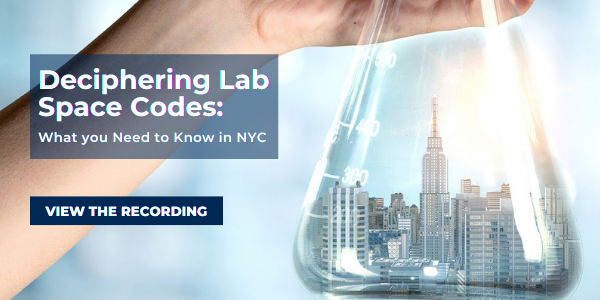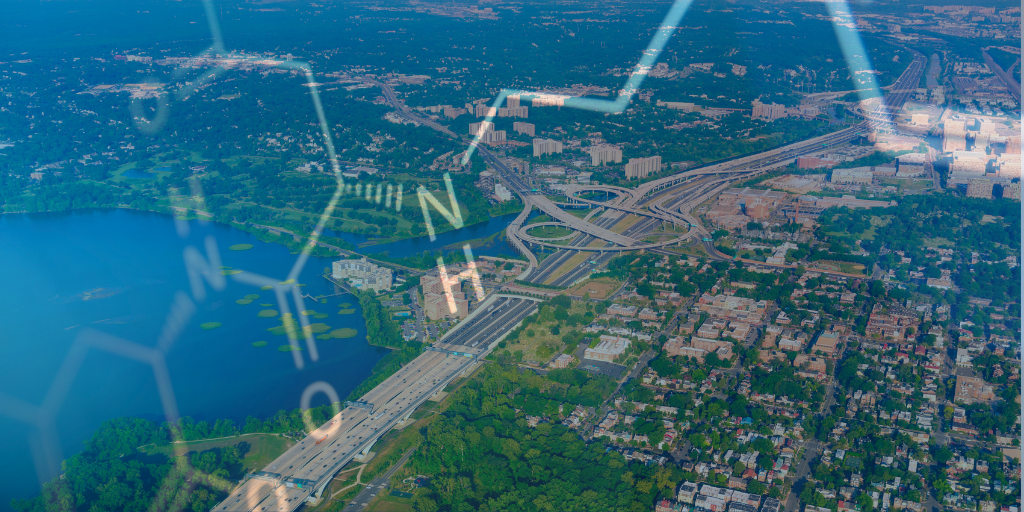Life sciences clusters are hotbeds of innovation, venture capital, jobs, and real estate activity. This has led many municipalities, regions, and jurisdictions to focus on attracting investment and businesses in the industry.
Many life sciences clusters exist across the nation, ranging from the Bay Area to Boston to New York City.
One focal point that is increasingly gaining attention is the BioHealth Capital Region (BHCR) in the DC-Maryland-Virginia (DMV) area, which is on the rise thanks to ramped-up research and development for COVID-19 treatments, as well as close proximity to the geographic center of the government's public health presence.
Amid greater economic uncertainty, life sciences is an industry poised for growth, which is something many companies, developers, and buildings have taken note of. To that end, let's look at the profile of the BioHealth Capital Region and how building code and zoning factors will play an important role in ensuring that enough real estate is built or renovated for life sciences occupancy.
What is the BioHealth Capital Region?
The BioHealth Capital Region is one of the most well-regarded life sciences clusters in the U.S. It was ranked as the No. 4 biopharma cluster in the nation in 2018 by Genetic Engineering and Biotechnology News (GEN), and the plan is to become a top three cluster by 2023.
In its 2018 rankings, GEN noted the region — which benefits from being a hub of industry, government, and research — is in a position to achieve that objective. The BHCR is home to more than 1,800 life sciences companies and over 70 federal labs and academic and research institutions, supporting tens of thousands of jobs.
 Other factors that underpin the strength of the region include:
Other factors that underpin the strength of the region include:
Proximity to federal agencies
The federal government has a considerable public health presence in the BHCR, drawing research, funding, and talent to the region. According to GEN, the National Institutes of Health (NIH) bases most of its 19,000 employees at its Bethesda, Maryland, headquarters, including around 6,000 researchers. This workforce also contains units from the National Institute of Allergy and Infectious Diseases, which is led by Dr. Anthony Fauci and has become a leading agency in the federal response to the COVID-19 pandemic.
Also, the Food and Drug Administration (FDA) has its headquarters in White Oak, Maryland, while the Centers for Medicare and Medicaid Services is based in Baltimore. Additionally, the National Institute of Standards and Technology (NIST) is located in Gaithersburg.
Academia and talent pool
Johns Hopkins University is one of the most recognized health care education institutions in the country, and it plays a central role in the BHCR ecosystem. It is the No. 1 recipient of NIH funding, having accumulated close to $723 million in 2020 awards. The University of Maryland secured more than $200 million in NIH funding, while the University of Virginia fell just outside the top 50.
A 2020 Cushman & Wakefield report notes that Johns Hopkins and UMD act as pipelines of talent, funding, and research to support life sciences activity, ultimately driving the majority of BHCR success.
'DNA Alley'
A defining characteristic of the BHCR is "DNA Alley," a concentration of life sciences companies located along the northern Interstate 270 corridor in Montgomery County, Maryland. The stretch runs from Bethesda through Rockville, Gaithersburg, Germantown, Clarksburg, and up to Frederick.
The collection of businesses found along this stretch span from startups to established life sciences leaders. GlaxoSmithKline, for example, has an office in Rockville, while AstraZeneca has a location in Gaithersburg. Most of the publicly traded biotech companies from Maryland can also be found along DNA Alley.
COVID-19 R&D drives BHCR growth
While much of the BHCR activity is centered in Maryland, Virginia has also produced notable life sciences startups. And across the DMV region, COVID-19 has spurred public health research and entrepreneurship, despite the generally tenuous economic situation domestically.
According to Montgomery County, more than $3 billion has been invested in local companies through public and private coronavirus vaccine research and manufacturing contracts. This includes $1.6 billion for Novavax (Gaithersburg) intended for late-stage vaccine research and $628 million for Emergent Biosolutions (Rockville) intended for vaccine manufacture. Both companies received funding through the federal Operation Warp Speed program initiated to accelerate a safe and effective COVID-19 vaccine.
Overall, Maryland Tech Council President Marty Rosendale estimated to Technical.Ly that 28 Maryland companies were working on some facet of a biotech response to COVID-19.
BHCR companies outside Maryland have stepped up to assist the U.S. healthcare supply chain in the face of unprecedented strain and demand. Phlow, a Virginia-based drug manufacturer, was awarded a $354 million contract in May 2020 for advanced manufacturing of essential medicines at risk of shortage. With the help of strategic partners like Virginia Commonwealth University's Medicines for All Institute, Phlow is contracted to deliver 16 million doses of five essential generic medicines used to treat COVID-19 patients to a national stockpile.
Demand for life sciences space stresses inventory
While the future of office space is uncertain amid the coronavirus, the life sciences industry is clamoring for real estate, driven by COVID-19 research and development, as well as other public health, biotech, and pharma activity that has boosted in the wake.
Yet as demand surges in Maryland and across the greater BHCR, available space is tightening.
In its 2020 life sciences report, Cushman & Wakefield said that, "Near-term, the life sciences sector in Baltimore should continue to tighten … This dearth of development will result in a tighter life sciences sector as limited new inventory is coming to market in the near future."
The report pegged Baltimore life sciences vacancy at about 8%.
The sagging inventory in Baltimore-D.C. was also noted by a 2020 CBRE life sciences report, which said that limited supply was pushing rents up, despite 430,000 square feet currently under construction.
The stressed supply is a trend that's continued from 2019. At that time, JLL estimated that available life science space in Shady Grove and Gaithersburg, the traditional core of the Maryland life science industry, was reduced to only six existing buildings offering blocks of space larger than 20,000 square feet. As a solution to the crunch, opportunities were being pursued to the north and south of the I-270 corridor.
Code and zoning factors in the life sciences spotlight
As BHCR growth ramps up further, ample supply of available real estate space will be a top consideration for businesses, developers, building owners, and municipal stakeholders. However, the task of bringing space meant for life sciences activity to market can be delayed by complexities with code and zoning factors.
Space built for life sciences occupancy must be compliant with very specific zoning regulations and building code compliance requirements. While each jurisdiction will have differing regulations and specific agency approvals must be obtained depending on the location of the site, in general the considerations span:
- Zoning: A building's location and classification dictate what building uses are permitted in it, therefore, you will need to confirm the use is permitted under local zoning laws.
- Floor loads:. The building's floor structure should be reviewed for anticipated loads for the particular lab, i.e. if the lab will contain heavy equipment and vibration control is needed. Office floor loading could work but may provide less flexibility for the lab use.
- Ventilation systems: To ensure chemical fumes generated in the lab are not recirculated, laboratories must meet tightly regulated air ventilation rates and require additional exhaust shafts be provided.
- Height restrictions: Hazardous chemical storage is reduced as you go up the building and these areas will need to be properly enclosed
Amenities and modern building design also factor into this equation. Amenities, like wellness resources or food and drink, are necessary for attracting and retaining top talent. Builders must also contend with COVID-19 era best practices for social distancing, touchless technology, and the like.
Follow Milrose to keep current on the latest trends
As the BHCR continues its growth, more companies, building owners, and others will be looking to find lab-ready space or convert existing buildings into lab space.
Milrose has local expertise in the DMV and can help you plan out the permitting and approval needs for your projects, ensuring that your life science space meets full code compliance. Contact David Leath (dleath@milrose.com) in Milrose’s DC office today to learn how we can streamline and accelerate your upcoming DMV-area construction projects.
Interested in learning more about the building code and zoning factors that impact life sciences projects? Sign up to attend Milrose's webinar "Decoding Lab Space Code: What you Need to Know in NYC" on Wednesday, January 20, 2021 at 2 PM EST.








